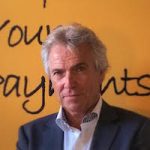Startup FinTech company Facturis and the traditional bank: How do they do it?
| 23-8-2017 | PowertoPay – Unified Post | Sponsored content |
 Facturis, a partner of UnifiedPost, is an online platform that helps to optimize the financial situation of small and medium-sized enterprises in the Netherlands. The platform facilitates a more efficient flow of incoming and outgoing invoices, debtor management, retrieval of digital debit authorizations, dynamic discounting and dynamic working capital credit. In this interview, Nico Ten Wolde, CEO of Facturis, is telling more about developments in the financial technical (FinTech) world.
Facturis, a partner of UnifiedPost, is an online platform that helps to optimize the financial situation of small and medium-sized enterprises in the Netherlands. The platform facilitates a more efficient flow of incoming and outgoing invoices, debtor management, retrieval of digital debit authorizations, dynamic discounting and dynamic working capital credit. In this interview, Nico Ten Wolde, CEO of Facturis, is telling more about developments in the financial technical (FinTech) world.
How did Facturis originate from the Rabobank?
Nico: “Rabobank started a strategic orientation in 2010 to increase its added value and uniqueness for its business customers. Rabobank wants to provide services within the customers’ business processes whenever and wherever they are needed. Where Rabobank has traditionally focused on offering products such as transactions, finance and insurance, she wanted to offer services to support the full order-to-cash flow process of her customers. This goes further than the execution of transactions and the provision of funding. By offering different services that work in synergy on one platform, the customer has lower operating costs and a lower need for external financing. In order to achieve this, Rabobank has established a partnership with UnifiedPost in the form of Facturis. UnifiedPost delivers the invoicing platform technology.”
What is the target group of Facturis? What do you do to connect the product to this target group?
Nico: “Facturis focuses on the business market, with the primary focus on small and medium-sized enterprises (SMEs). These types of organizations need to obtain services from many different parties in order to optimize the financial and administrative processes. Because they buy services from different parties, there is insufficient insight into and grip on the overall financial process. By integrally providing services from various partners on one platform, we give entrepreneurs more insight into their financial situation. That goes further than sending invoices – it’s about getting bills paid as quickly as possible.”
Fin Tech initiatives – what changes?
Everyone talks about the changing role of the banks, partly through the FinTech initiatives. What do you think are the things we already notice?
Nico: “What I see is that 10 years ago a bank was the only place you would consider for financial services, this is no longer always the case. Think of FinTech parties like Adyen, which offer a wide range of financial products from banks and other financial institutions on a platform. The customer no longer deals directly with a traditional bank. In addition, we see a strong growth of (crowd) funding platforms. The financing is no longer obtained through a bank. More recently, several blockchain initiatives and the oncoming implementation of PSD2 will create new opportunities for players outside the traditional banking world.”
Why do you think banks will increasingly work with FinTech companies? What is the benefit for the banks?
Nico: “On the one hand, banks often have to deal with complex legacy systems which limit the possibilities to quickly implement new solutions. On the other hand, banks have to deal with implementing and maintaining new rules and regulations with the current processes. This makes it almost impossible to quickly implement innovations. FinTech companies can quickly launch new concepts for specific target groups. Through cooperation with banks, the power of the existing brand and distribution channel is optimally utilized. A win-win situation for the customer, the FinTech company and a bank.”
What was the biggest success in Facturis?
Nico: “The launch of the pilot Invoice Credit. The Invoice Credit is a dynamic working capital credit that moves along in real-time with the (outgoing) invoice flow of a company. As a result, the entrepreneur does not always have to return to his bank to make an adjustment on his credit line. Due to the flexibility of InvoiceCredit, companies can streamline the flow of money, thus optimizing their working capital. InvoiceCredit fulfils the companies need for a credit that reflects fluctuations in the invoice flow and that grows along with the company.”
What is your biggest challenge within Facturis?
Nico: “Our biggest challenge is to maintain the speed you need as a FinTech to be successful and to be able to continue to innovate. Laws, regulations and legacy systems sometimes limit the speed to launch new services quickly within large corporate organizations. In cooperation with large organizations, such as banks, we face the challenge of balancing speed and adopting new banking services.”
How has such a creative thinking startup within the (traditional) bank been adopted so well?
Nico: “On the one hand, with a lot of missionary work within Rabobank in the form of presentations and writing many memo’s to convince the right stakeholders inside and outside the Rabobank. On the other hand, the arrival of Wiebe Draijer (Chairman of the Board of Rabobank) helped us greatly with the adoption of Facturis within the Rabobank. With the establishment of a FinTech & Innovation department, Rabobank made a clear choice for the adoption of FinTech companies in the future.”
What do you think is the most successful FinTech initiative in the market?
Name 1 launched and 1 that has not yet been launched.
Nico: “Launched: Kabbage: Kabbage is an American FinTech that can assess a consumer’s or SME’s financing request within a few minutes.
Not launched: Easytrade, an innovative currency hedging solution for hedging currency risks of (international) companies. Easytrade is a new FinTech initiative created by Rabobank Moonshot Program, an internal acceleration program aimed at realizing the advancing ideas of employees.”
What do you think are the most important FinTech developments in the near future?
Nico: “In the coming years, I see major changes in risk management. Through the application of AI and machine learning, we are able to better estimate risks and utilize opportunities with a much larger predictive ability. This has a positive impact on customers, we can deliver services exactly when the customer needs them. In addition, integrating blockchain initiatives and virtual currencies within the financial sector will take a huge run. With the implementation of PSD2, it is possible for FinTech companies to combine the old world and the new world. This allows for gradual adoption
of these new developments for customers.”

PowertoPay – Unified Post
[button url=”https://www.treasuryxl.com/community/companies/powertopay/” text=”View company profile” size=”small” type=”primary” icon=”” external=”1″]
[separator type=”” size=”” icon=””]

 An interesting
An interesting 
 PSD2 is a recurring topic which is of great concern to financial institutions and other payment service providers, as well as finance professionals at corporates all over the world. We read an interesting article about the disruption and innovation of open banking at
PSD2 is a recurring topic which is of great concern to financial institutions and other payment service providers, as well as finance professionals at corporates all over the world. We read an interesting article about the disruption and innovation of open banking at  Banks have long been target of wild spread ideas that their role as facilitator in the (inter) national money transaction industry will soon be overtaken by new Fintech initiatives like PayPal, Bitcoin and recently Ethereum. The idea behind these new technologies is that the Trusted Third Party (TTP) role of the conventional banks which is crucial for the operational day to day operations of the economic systems can be overtaken by the new block chain technology. Main advantages are clear: transactions are no longer limited by timing (no dependency on the operational boundaries of clearing houses, cut-off times of banks per currency, immediate processing etc), account opening procedures at the banks, the costs involved in maintaining accounts and transactions themselves etc.
Banks have long been target of wild spread ideas that their role as facilitator in the (inter) national money transaction industry will soon be overtaken by new Fintech initiatives like PayPal, Bitcoin and recently Ethereum. The idea behind these new technologies is that the Trusted Third Party (TTP) role of the conventional banks which is crucial for the operational day to day operations of the economic systems can be overtaken by the new block chain technology. Main advantages are clear: transactions are no longer limited by timing (no dependency on the operational boundaries of clearing houses, cut-off times of banks per currency, immediate processing etc), account opening procedures at the banks, the costs involved in maintaining accounts and transactions themselves etc.

 In his article ‘
In his article ‘ PSD2 is approaching soon, just a few months left. But do you know what exactly PSD2 is? And more important, what does PSD2 mean for your businesses? PSD2 enables relations of banks, to use (selected) third-party providers to manage their financial data. In the near future, you maybe will use social media to directly pay your bills, while still having your money safely placed in your own bank account(s).
PSD2 is approaching soon, just a few months left. But do you know what exactly PSD2 is? And more important, what does PSD2 mean for your businesses? PSD2 enables relations of banks, to use (selected) third-party providers to manage their financial data. In the near future, you maybe will use social media to directly pay your bills, while still having your money safely placed in your own bank account(s). Mark van de Griendt – Cash Management Expert at
Mark van de Griendt – Cash Management Expert at 

 Recently, I wrote that smaller blockchain consortia are needed. See my
Recently, I wrote that smaller blockchain consortia are needed. See my  On 18/5/2017, I attended a seminar covering the topic “From Fintech to Regtech… from potentially disruptive to leaner compliance opportunities” organized by The Finance Club of Brussels, the Free University of Brussels (ULB), the Solvay Finance Society and Thomson Reuters.
On 18/5/2017, I attended a seminar covering the topic “From Fintech to Regtech… from potentially disruptive to leaner compliance opportunities” organized by The Finance Club of Brussels, the Free University of Brussels (ULB), the Solvay Finance Society and Thomson Reuters. François de Witte – Founder & Senior Consultant at
François de Witte – Founder & Senior Consultant at